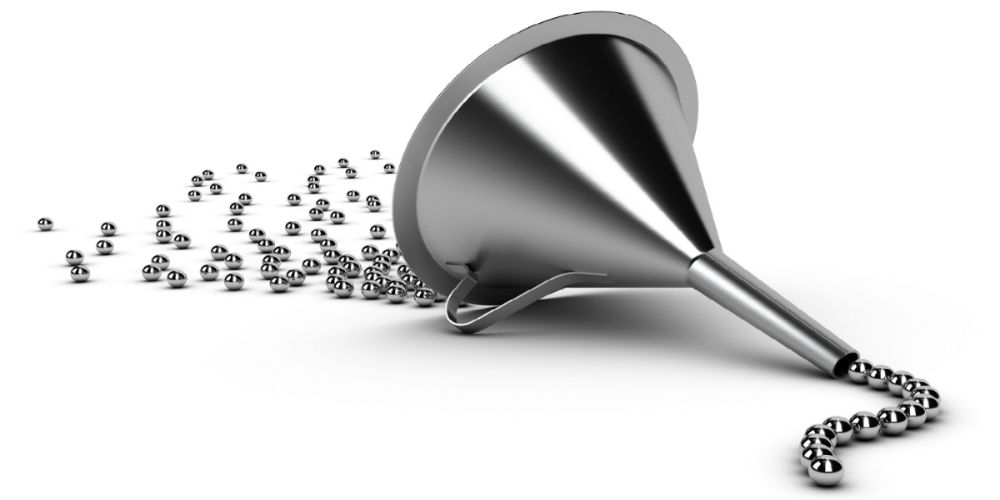166% conversion rates from your marketing program

When I speak with customers and prospects about they would like to achieve with their referral program and what it can do for their business, we usually end up in a conversation about conversion rates. After all, our typical customer is a marketer: someone whose very career is measured by their ability to attract customers. Whether you’re a creative designer, a great content creator, a master of social interaction or a coordinator extraordinaire, your job is one of converting prospects to customers: attraction and retention.
All marketers are measured — to one degree or another — on their ability to turn one amount of money (like: their salaries and advertising spend) into much more money: to invest less money in marketing than the value to the business provided by the new customers you attract. Marketers are converting prospects to customers.
Conversion Rate Optimization (CRO) is a term used to describe the methods applied to systems that can convert the highest number of website visitors to customers as possible. And there are hundreds of companies online selling tools, knowledge and systems to help businesses maximize their CRO.
Referral marketing is no different. Word of mouth marketing (WOMM) is one of the oldest forms of referral marketing, and optimizing its conversion rate has been a business priority for centuries.
Let’s say you are a happy customer of Mary’s Hardware store. You might tell your friends Natalie and Orville about Mary’s store, and about the great service and products you can get there. If Natalie becomes a customer of Mary’s Hardware store, but Orville chooses to use the Hardware store in the next town, you’ve brought Mary one new customer (good), but your two referrals netted only a 50% conversion rate to one referee. Mary might throw an extra 1/2 pound of nails on your next order for free in gratitude for bringing Natalie her way, but its easy to see how the entire process could be better and more rewarding for both you and Mary’s store.
This is one of the more interesting elements of WOMM: optimizing a referral marketing program to suit your business.
Our referral programs track many different metrics for our customers, including
- how many existing customers were attracted to the program to become advocates
- how many people (advocates) make a referral (and how many referrals they make)
- how many leads are generated (potential new customers who have been referred) and finally …
- how many actual new customers are generated from the program.
I’ve written quite a bit about effective referral marketing program design in other blog posts, so I won’t go into it in more detail here, but let’s take a look at the conversion rates a referral marketing program can deliver. Conversion rates for traditional digital marketing methods are frankly pathetic. According to the direct marketing association, the median return on investment for digital marketing methods ranges from 6% for internet display ads, to 23% for email marketing. The click-through rates of display ads, across all ads and formats, is reported to be around 0.17%. That means your ad needs to reach 588 people for one to click through. Pretty abysmal conversion. Average email click through rates are around 3%, meaning you need to reach about 33 people for one to click through. And then, those that do click through still need to make a purchase decision, which further dilutes the conversion rate for that given digital marketing methodology.
Although it’s possible to influence each of these conversion rates through simple and effective means, in this post, I’m going to focus on two of the simplest numbers, or more accurately, ratios.
- How many people do I need to attract to my referral program in order to generate a new customer.
This is the number of customers to whom you promote the referral program who show up and take interest in your program and who may or may not make a referral. You want this ratio to be as low as possible. Of course, not everyone who learns about your referral program will make a referral, so you might need to attract 10 people to the referral program in order for enough referrals to be generated that create 1 new customer. That would be a decent conversion ratio of 10:1, or 10%.
- How many people do I need actually making referrals in order to generate a new customer.
This is the number of customer advocates who make referrals on your behalf, reaching out to their friends and family to refer them to you. Again, ideally this number is less than one; meaning that if you get one person to make referrals that generate one new customer, your Referring Customers ratio is less than 1:1
There are many factors that can influence these conversion ratios.
- How likely are your customers to become advocates of your product or service?
- Does your brand and product image inspire affinity and advocacy?
- Is your referral program offering compelling intrinsic and extrinsic rewards?
- Is your program rewarding the right type of advocates at the right time?
By contrast, let’s take a look at conversion rates for referral marketing programs. I don’t do this often but I decided to take a snapshot of a couple of our customers from across our low, moderate and top-performing programs, across industry verticals, and average them out. Here’s what I found for the first calendar quarter of 2016. (Typically, right after Christmas it’s a quiet time for marketing program performance, but our customers referral marketing programs demonstrated that they could knock digital marketing conversion rates out of the park.)
- How many people do I need to attract to my referral program in order to generate one new customer.
- Snapshot: 4:1 average
- This means that across a sampling of our clients (across industries), on average they attracted 4 potential advocates in order to generate a new customer.
- This is an average conversion rate of 25%
- Snapshot: 4:1 average
- How many people do I need actually making referrals (customers who became advocates) in order to generate one new customer.
- Snapshot: 2:1 average
- Across that same sampling of our clients/industries, they generated an average of one new customer for every two advocates who made a referral.
- This is an average conversion rate of 50%
- Snapshot: 2:1 average
Now we’re talking. It’s interesting to note that our top-performing customer in the credit union segment outperformed these figures during this period.
But that’s not the whole story. During that same period, some of our clients achieved much better results. If take a look at one of the top performers, this is what I see:
- How many people do I need to attract to my referral program in order to generate one new customer.
- Top performer: 1.4:1
- This is a conversion rate of 71%
- Top performer: 1.4:1
- How many people do I need actually making referrals in order to generate one new customer.
- Top performer: 0.6:1
- This is a conversion rate of 166%
- Top performer: 0.6:1
Now, some other referral marketing solutions show a referral conversion rate of greater than 15% as having “nailed it”. But as our lovely customers have clearly shown, it’s possible to achieve much higher conversion rates with the right solution and program design. Automated referral marketing solutions can achieve the highest conversion rates of any digital marketing methodology. There’s no question about that.
How is this possible? How can referral marketing programs deliver these kinds of conversion rates (and better)? The primary reason is related to trust. And math. Consumers trust their friends and family more than all other kinds of digital marketing.
- 92% of consumers around the world say they trust earned media, such as recommendations from friends and family, above all other forms of advertising.
- 84% of global consumers say word of mouth is the most trust worthy source of product recommendations.
- 77% of consumers are more likely to buy a new product when learning about it from friends or family.
What conversion rates are you seeing from your marketing programs? How is your referral marketing program performing? We’d love to hear from you.





